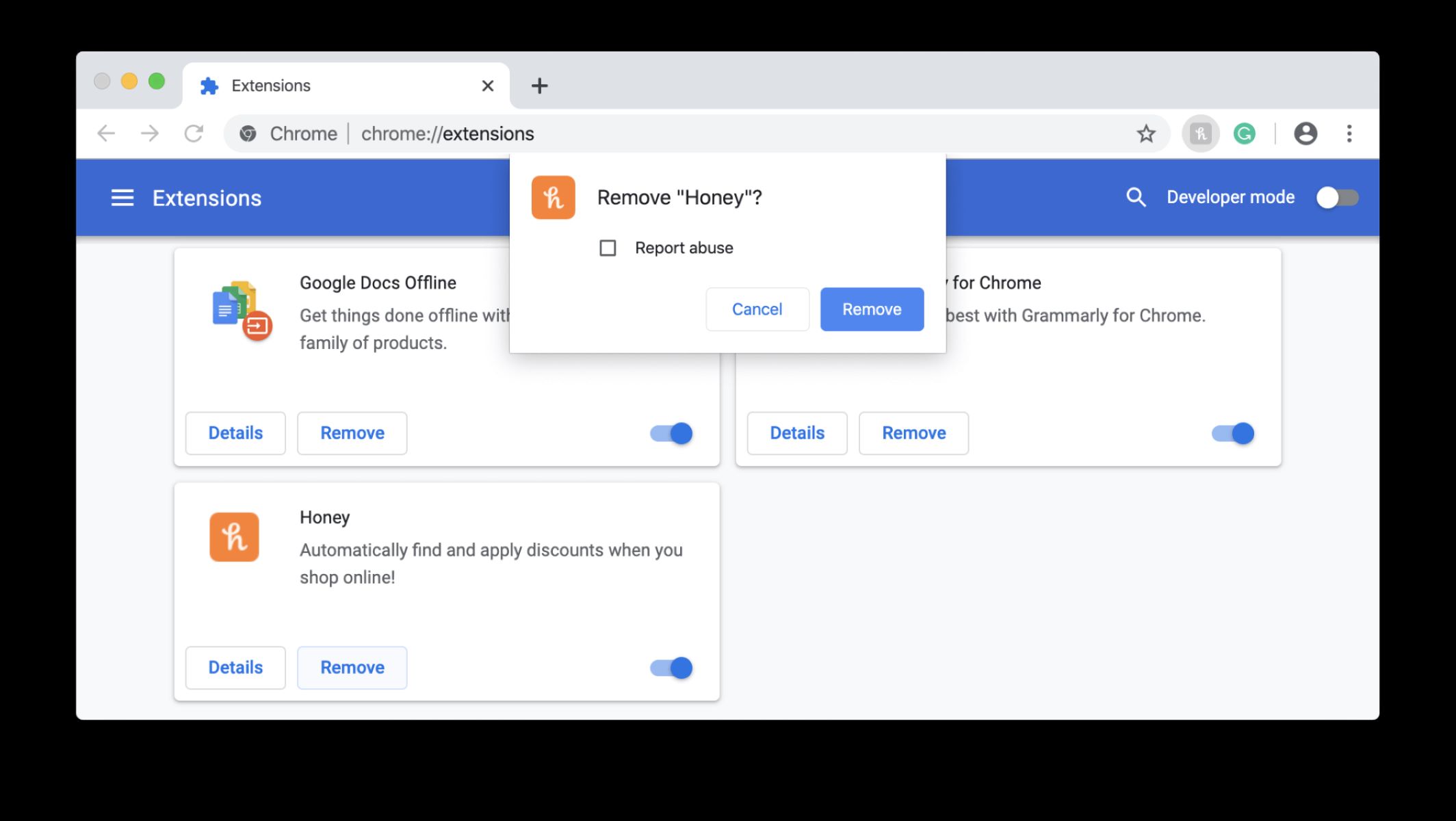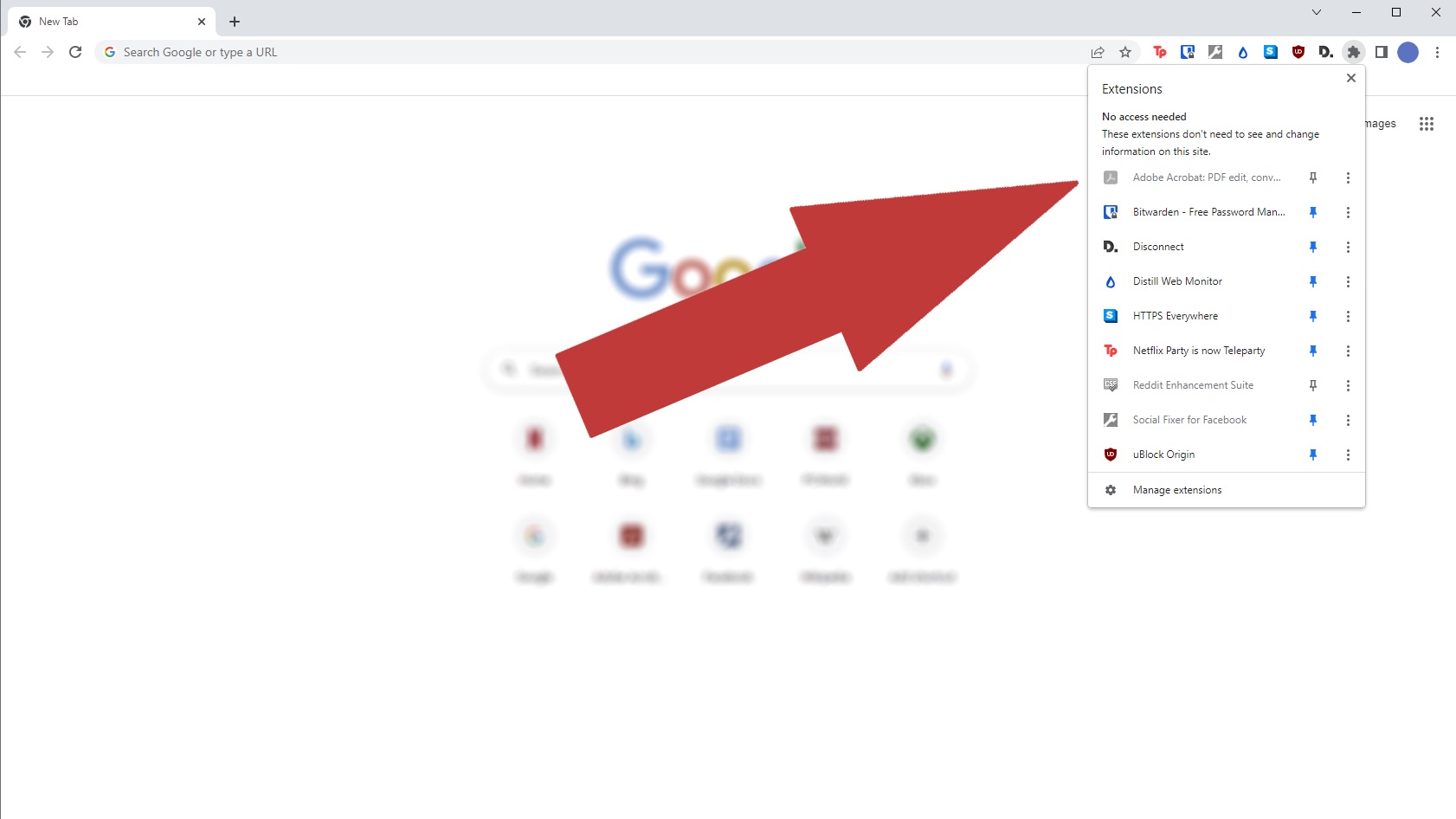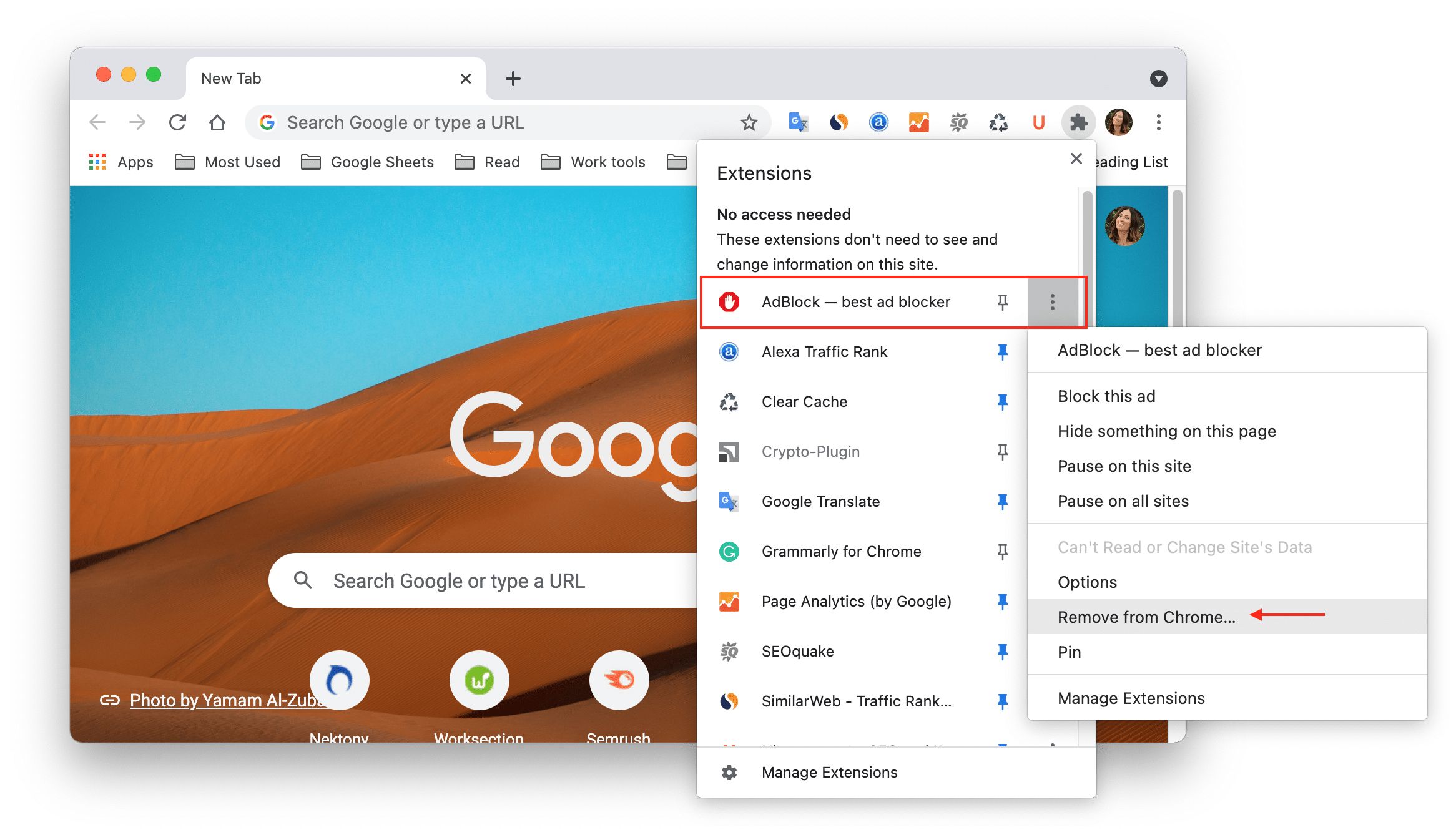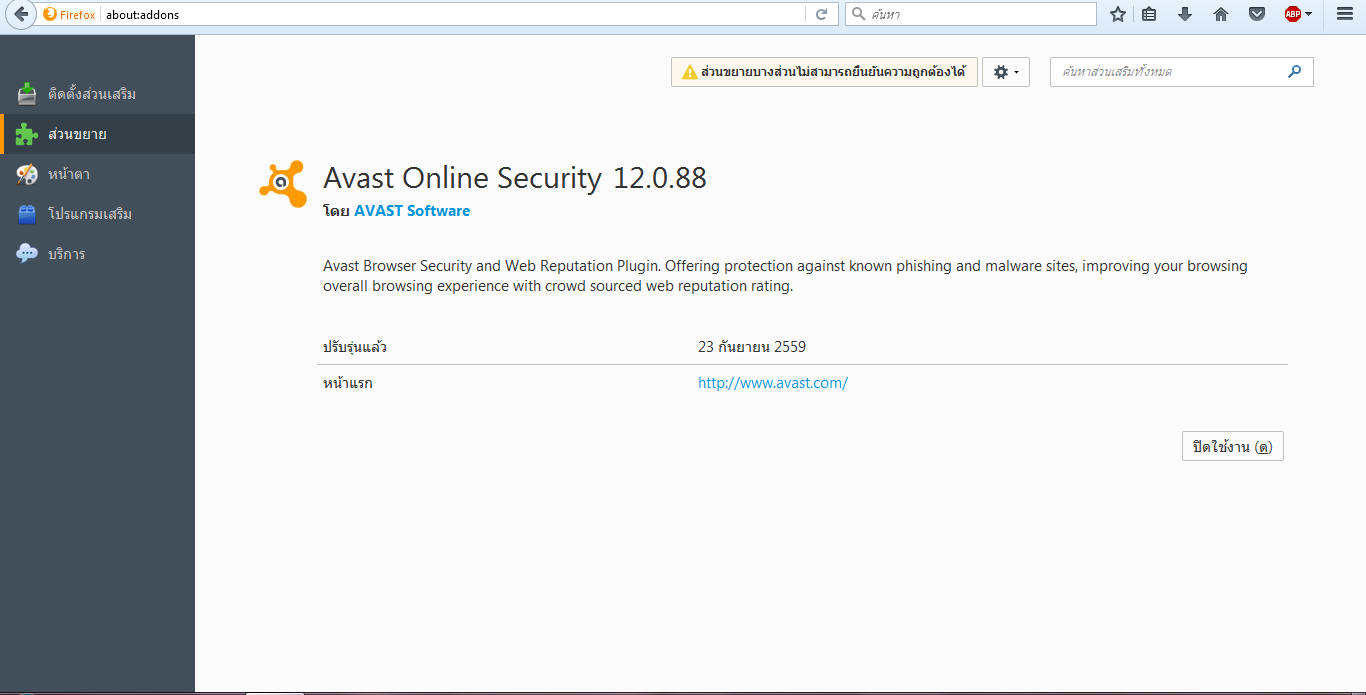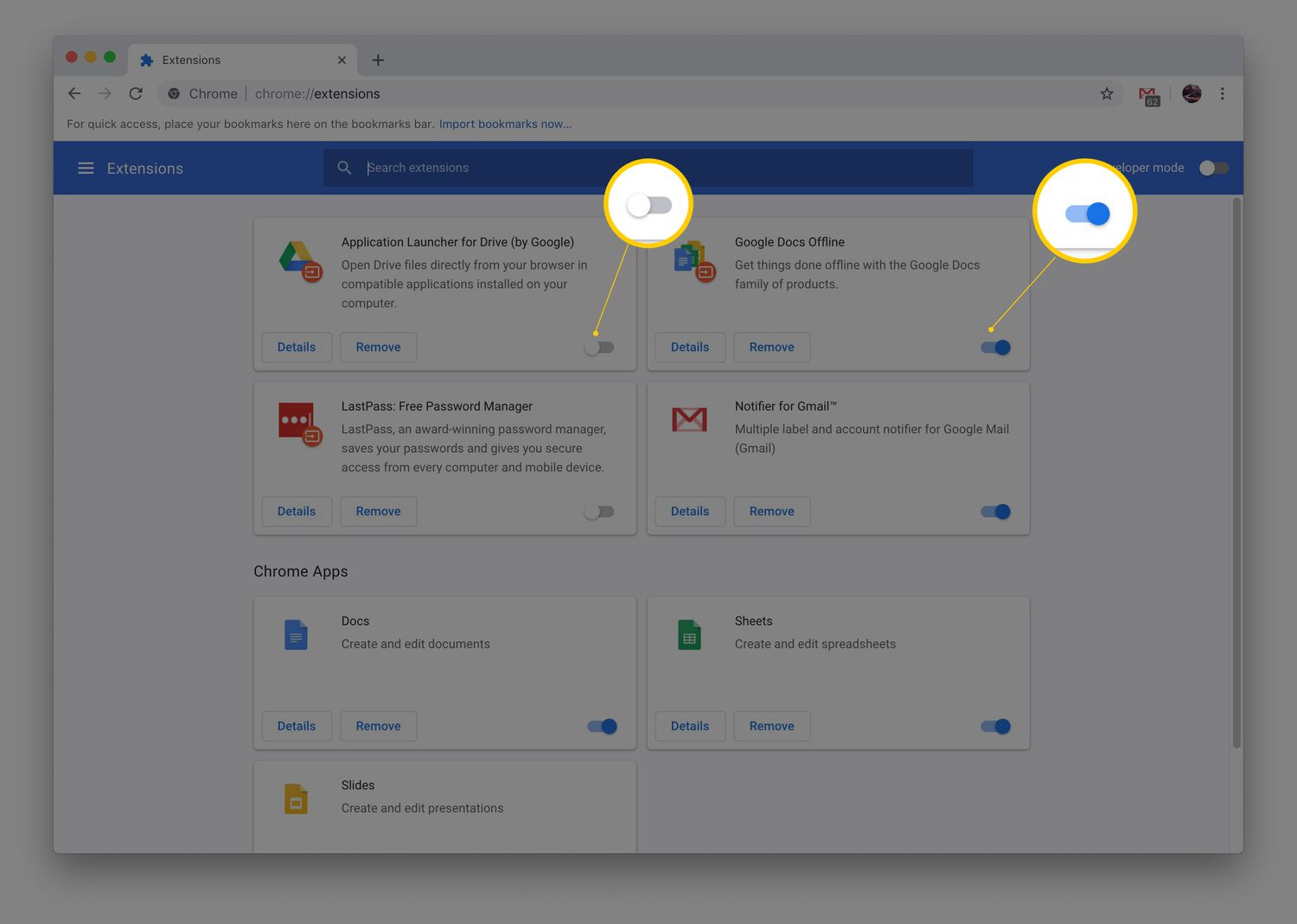Introduction
In today’s digital age, web browsers have become an essential tool for accessing the vast world of information available on the internet. One of the reasons for their popularity is the ability to customize and enhance the browsing experience through browser extensions. These extensions add various functionalities, such as ad blockers, password managers, and productivity tools, making our online activities more convenient and efficient.
While browser extensions can greatly improve our browsing experience, it’s important to manage them wisely. Over time, you may accumulate a multitude of extensions, some of which may become outdated, redundant, or even malicious. This can lead to performance issues, slower browsing speeds, and potential security risks.
In this article, we will guide you through the process of removing browser extensions from popular web browsers like Google Chrome, Mozilla Firefox, Safari, Microsoft Edge, and Internet Explorer. By removing unnecessary or unwanted extensions, you can optimize your browser’s performance, improve security, and enhance your overall browsing experience.
Keep in mind that removing an extension will disable or remove its functionality from your browser. If you find that you need the functionality later, you can always reinstall the extension from the appropriate browser extension store.
Now, let’s dive into the step-by-step instructions for removing browser extensions in different web browsers.
Why Remove Browser Extensions?
Browser extensions are undoubtedly useful additions to enhance your browsing experience. However, it’s important to periodically assess and remove unnecessary extensions for several reasons.
1. Performance Optimization: Having too many browser extensions can significantly impact your browser’s performance. Each extension consumes system resources, such as memory and processing power, which can slow down your browsing speed. By removing unused and redundant extensions, you can improve the overall performance and responsiveness of your browser.
2. Security Concerns: While most browser extensions are developed by trustworthy developers, there are instances where malicious extensions can compromise your online security. Some extensions may collect your browsing data without your consent or contain harmful code that can lead to malware infections. Removing unnecessary or suspicious extensions reduces the risk of exposing your personal information and ensures a safer browsing environment.
3. Clutter Reduction: Over time, you may accumulate a multitude of browser extensions, some of which you may rarely or never use. Having a cluttered browser interface not only makes it difficult to find the extensions you need but also hinders your overall browsing experience. Removing unnecessary extensions declutters your browser interface, making it easier to manage and navigate through your preferred tools.
4. Compatibility Issues: As browsers and their respective extension platforms evolve, certain extensions may become incompatible with newer browser versions. This can result in extensions malfunctioning, causing unexpected errors or crashes. By regularly reviewing and removing outdated extensions, you can ensure that your browser and its installed extensions remain compatible and function as intended.
5. Enhanced Privacy: Some browser extensions may have access to your browsing history, personal information, or online activities. While many extensions have legitimate reasons for requiring such access, it’s important to be mindful of the permissions you grant. By removing unnecessary extensions, you can limit the exposure of your personal data and maintain better control over your online privacy.
Taking the time to remove unnecessary browser extensions can greatly improve your browsing experience in terms of speed, security, and organization. In the following sections, we will provide step-by-step instructions on how to remove extensions from popular web browsers.
How to Remove Browser Extensions in Google Chrome
If you’re using Google Chrome as your preferred web browser, you can easily manage and remove extensions by following these steps:
- Launch Google Chrome on your computer.
- Click on the three-dot menu icon located at the top-right corner of your browser window.
- From the dropdown menu, hover your cursor over “More tools” and then click on “Extensions”.
- A new tab will open, displaying all the installed extensions.
- Find the extension that you want to remove and click on the “Remove” button next to it.
- A confirmation dialog box will pop up, asking you to confirm the removal of the extension. Click on “Remove” to proceed.
- The extension will be removed from your browser, and its associated functionalities will no longer be available.
Alternatively, you can also access the extensions management page by typing “chrome://extensions/” in the address bar and pressing Enter.
It’s important to note that some extensions may require additional steps or have their own uninstallation process. For such extensions, you can find specific instructions provided by the extension developer on the extension’s details page in the Chrome Web Store.
Remember to review your extensions periodically and remove any that you no longer need or use. Removing unnecessary extensions not only helps optimize your browser’s performance but also reduces potential security risks and clutter.
How to Remove Browser Extensions in Mozilla Firefox
If you’re using Mozilla Firefox as your web browser, you can easily manage and remove extensions by following these step-by-step instructions:
- Open Mozilla Firefox on your computer.
- Click on the menu icon located at the top-right corner of the browser window. It looks like three horizontal lines.
- From the dropdown menu, select “Add-ons”.
- A new tab will open, displaying the Firefox Add-ons Manager.
- In the sidebar on the left, click on the “Extensions” option.
- Scroll through the list of installed extensions and locate the one you want to remove.
- Click on the “Remove” button next to the extension you wish to uninstall.
- A confirmation popup will appear. Click on “Remove” to confirm the removal.
- The extension will be removed from Firefox, and its functionalities will no longer be available.
It’s worth noting that some extensions may have their own uninstallation process or additional steps required for removal. If that’s the case, you can find detailed instructions on the extension’s details page in the Mozilla Add-ons store.
Regularly reviewing and removing unnecessary extensions from your Firefox browser can help improve its performance and security. By minimizing the number of installed extensions, you can ensure a smoother and more efficient browsing experience.
How to Remove Browser Extensions in Safari
If you’re using Safari as your web browser on a Mac, you can manage and remove extensions by following these simple steps:
- Open Safari on your Mac.
- Click on the “Safari” menu in the top menu bar.
- From the dropdown menu, select “Preferences”.
- A new window will appear, displaying the Safari Preferences.
- Click on the “Extensions” tab at the top of the window.
- You will see a list of installed extensions on the left-hand side of the window.
- Select the extension you want to remove by clicking on it.
- Click on the “Uninstall” button located on the right side of the window.
- A confirmation popup will appear. Click on “Uninstall” to confirm the removal of the extension.
- The extension will be removed from Safari, and its functionalities will no longer be available.
In some cases, you may need to restart Safari for the changes to take effect.
It’s important to note that some extensions may have their own specific uninstallation instructions. If that’s the case, you can find the necessary information on the extension developer’s website or support page.
Regularly reviewing your installed extensions and removing unnecessary ones can help improve Safari’s performance and protect your online privacy. By keeping your browser streamlined and free of unnecessary extensions, you can enjoy a faster and more secure browsing experience.
How to Remove Browser Extensions in Microsoft Edge
If you’re using Microsoft Edge as your web browser, you can manage and remove extensions by following these steps:
- Open Microsoft Edge on your computer.
- Click on the three-dot menu icon located at the top-right corner of the browser window.
- From the dropdown menu, select “Extensions”.
- The Edge Extensions page will open, displaying all the installed extensions.
- Find the extension you want to remove and click on the gear icon next to it.
- A menu will appear. Click on “Remove” to uninstall the extension.
- A confirmation dialog box will pop up. Click on “Remove” again to confirm the removal.
- The extension will be removed from Microsoft Edge, and its functionalities will no longer be available.
Alternatively, you can access the extensions management page by typing “edge://extensions” in the address bar and pressing Enter.
It’s worth noting that some extensions may have their own uninstallation process or require additional steps for removal. In such cases, you can find specific instructions provided by the extension developer on the extension’s details page in the Microsoft Edge Add-ons store.
Regularly reviewing and removing unnecessary extensions from your Microsoft Edge browser can help optimize its performance and ensure a smoother browsing experience. By keeping your browser clutter-free, you can enjoy faster page load times and a more streamlined interface.
How to Remove Browser Extensions in Internet Explorer
If you are using Internet Explorer as your web browser, you can manage and remove extensions in the following steps:
- Open Internet Explorer on your computer.
- Click on the gear icon located at the top-right corner of the browser window.
- From the dropdown menu, select “Manage Add-ons”.
- A new window will open, displaying the Manage Add-ons interface.
- In the left-hand side panel, click on “Toolbars and Extensions”.
- You will see a list of installed extensions on the right-hand side of the window.
- Select the extension you want to remove by clicking on it.
- Click on the “Disable” button to disable the extension temporarily or the “Remove” button to completely uninstall it.
- A confirmation dialog box may appear. Follow the prompts to confirm the removal of the extension.
- The extension will be removed from Internet Explorer, and its functionalities will no longer be available.
It’s important to note that Internet Explorer is an older browser, and many extension developers have shifted their focus to newer browsers. As a result, the availability of extensions for Internet Explorer may be limited.
Regularly reviewing and removing unnecessary extensions from your Internet Explorer browser can help improve its performance and security. By keeping your browser free from unnecessary extensions, you can enhance your overall browsing experience.
Additional Tips for Removing Browser Extensions
When it comes to removing browser extensions, here are some additional tips to keep in mind:
- Review Extension Permissions: Before installing any browser extension, take a moment to review the permissions it requires. Be cautious of extensions that request access to sensitive data or permissions that seem excessive for their intended functionality.
- Check for Extensions Causing Issues: If you’re experiencing browser crashes, slow performance, or other issues, consider disabling or removing recently installed extensions. Sometimes, incompatible or poorly coded extensions can disrupt the browser’s normal functioning.
- Keep Extensions Updated: It’s important to keep your installed extensions up to date. Extension developers often release updates to improve performance, fix bugs, and address security vulnerabilities. Regularly check for updates through your browser’s extension management page or set extensions to update automatically.
- Research Unknown Extensions: If you come across an unfamiliar extension installed on your browser that you don’t recall installing, research it thoroughly before removing it. It’s essential to ensure it’s not a legitimate and useful extension that you may have unintentionally installed.
- Use a Reputable Extension Store: To minimize the risk of installing malicious extensions, only download and install extensions from reputable sources like the Chrome Web Store, Mozilla Add-ons, or official extension stores provided by your browser manufacturer.
- Consider Using Extension Managers: If you regularly use a large number of extensions, consider using browser extension managers. These tools allow you to enable or disable extensions on-demand, helping you maintain a clutter-free browser interface.
By following these additional tips, you can ensure a smoother and more secure browsing experience by carefully managing your installed extensions.
Conclusion
Managing and removing browser extensions is an essential practice to optimize your browsing experience. By periodically reviewing and removing unnecessary or outdated extensions, you can improve performance, enhance security, and maintain a clutter-free browser environment.
In this article, we explored the step-by-step instructions for removing extensions in popular web browsers such as Google Chrome, Mozilla Firefox, Safari, Microsoft Edge, and Internet Explorer. The process may vary slightly between browsers, but the general steps involve accessing the extensions or add-ons management page, locating the desired extension, and removing it through the provided options.
Additionally, we discussed the reasons why it’s important to remove browser extensions. By removing unused or malicious extensions, you can optimize performance, address compatibility issues, reduce clutter, and enhance privacy and security.
Remember to regularly review your extensions and consider their permissions, functionality, and compatibility. Keep your extensions updated to benefit from the latest improvements and security patches.
By following the tips and guidelines provided in this article, you can maintain a streamlined and secure browsing experience that aligns with your specific needs and requirements.







